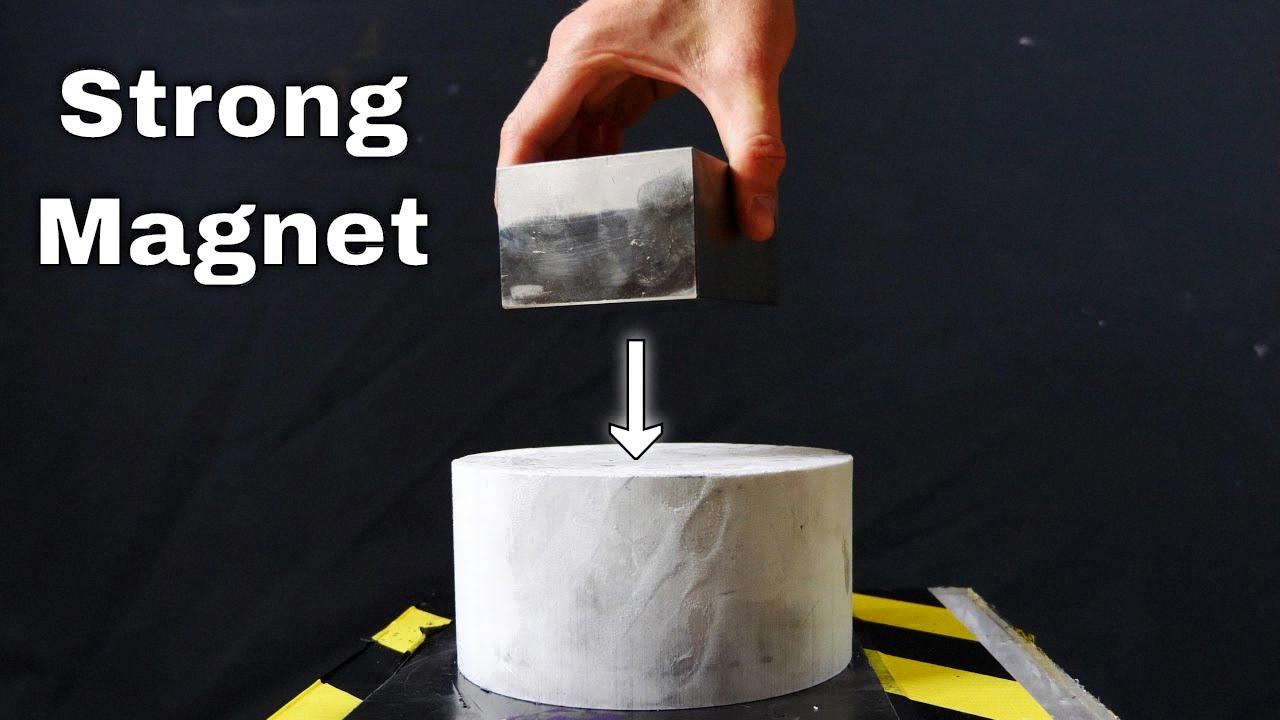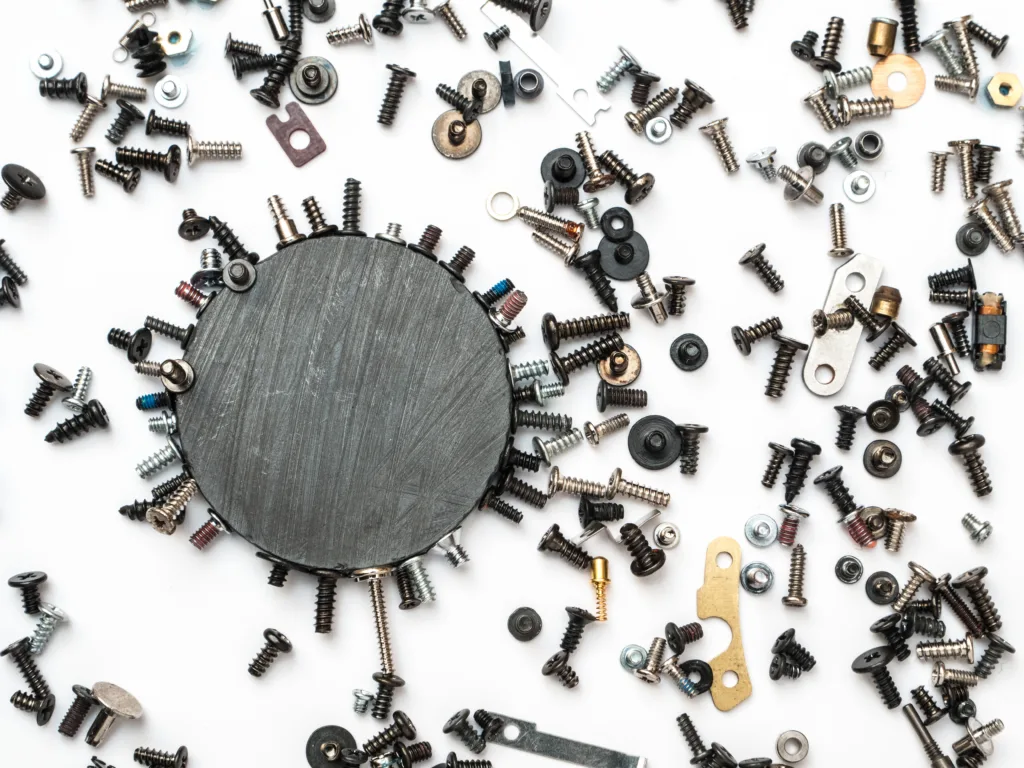Magnetism is a fascinating natural phenomenon that has intrigued scientists and laypeople alike for centuries. The ability of a magnet to attract certain materials has many practical applications in our daily lives. One question that often arises is whether or not a magnet will stick to aluminum.
Aluminum is a non-magnetic metal, which means that it is not attracted to magnets. This is bcause aluminum does not have magnetic properties like iron or steel. If you were to hold a magnet to a piece of aluminum, you would not feel any magnetic force pulling the two together. In fact, aluminum is often used in electronic devices precisely because it is non-magnetic and does not interfere with the operation of sensitive electronic components.
While aluminum itself is not magnetic, it can be magnetized when it is in close proximity to a strong magnetic field. This is known as induced magnetism, and it occurs when the electrons in the aluminum are aligned in a way that creates a magnetic field. However, this induced magnetism is temporary and will disappear once the aluminum is removed from the magnetic field.
It is important to note that not all metals are non-magnetic like aluminum. Some metals, such as iron, nickel, and cobalt, are strongly magnetic and will be attracted to magnets. Other metals, such as copper, gold, and silver, are weakly magnetic and will not be attracted to magnets.
A magnet will not stick to aluminum because aluminum is a non-magnetic metal. While aluminum can be magnetized under certain circumstances, this induced magnetism is temporary and will not create a lasting magnetic field in the metal. Understanding the magnetic properties of different metals is important for a variety of applications, from electronics to manufacturing to scientific research.
Identifying the Difference Between Aluminum and Steel
To determine whether something is made of aluminum or steel, there are a few methods you can use. One of the simplest ways is to conduct a magnet test. Since aluminum is non-magnetic, it will not be attracted to a magnet, whereas steel will be. Simply hold a strong magnet close to the object, and if it sticks or is attracted to it, it is likely made of steel. If the magnet does not stick or is not attracted, it is probably made of aluminum.
Another way to distinguish between aluminum and steel is by ther weight. Aluminum is a much lighter metal than steel, so if the object in question feels light for its size, it is more likely to be aluminum. However, this method is not foolproof since the weight of an object can be influenced by other factors such as its size and shape.
Visual inspection can also be helpful in identifying the metal type. Aluminum is typically a lighter, brighter color than steel, which may have a darker or more matte appearance. Additionally, aluminum has a unique dulling effect when it oxidizes, creating a white or grayish film on the surface.
If you are still unsure, you can also consult an expert or use specialized equipment such as X-ray fluorescence (XRF) guns, which can analyze the composition of metals without damaging them. Overall, a combination of these methods can help you accurately determine whether an object is made of aluminum or steel.

Source: youtube.com
Metals That Do Not Stick to a Magnet
There are many metals that do not stick to a magnet. These metals are known as non-ferromagnetic metals. Some of the most common non-ferromagnetic metals include aluminum, copper, brass, gold, silver, titanium, tungsten, and lead. These metals cnnot be made into magnets, nor will they be attracted to magnetic fields. This is because they do not have the necessary magnetic properties to be affected by a magnetic field. Therefore, if you try to use a magnet on these metals, you will not see any attraction or repulsion. This is important to keep in mind when working with metals, as it can impact the types of tools and equipment that are needed for a particular project.
Adhesion of Materials to Aluminum
Yes, many substances can stick to aluminum. However, the bonding strength and effectiveness of the adhesion will depend on several factors, including the type of adhesive used, the surface preparation of the aluminum, and the nature of the material being bonded.
Aluminum is a commonly used material in many industries due to its lightweight, strength, and corrosion resistance. It is used in the manufacture of automotive parts, aircraft components, electronic devices, building materials, and many other applications.
To bond materials to aluminum, various adhesives can be used, including epoxies, acrylics, urethanes, and cyanoacrylates (super glue). The choice of adhesive will depend on the specific requirements of the application, such as the strength, durability, and flexibility needed.
Surface preparation is a critical step in achieving a strong bond btween aluminum and the adhesive. The surface of the aluminum must be clean, dry, and free from any oils, grease, or other contaminants that could interfere with the bonding process. Sanding or roughening the surface of the aluminum can also improve the adhesion.
In conclusion, yes, many substances can stick to aluminum, but the effectiveness of the bond will depend on the type of adhesive used, the surface preparation of the aluminum, and the nature of the material being bonded.
Does a Magnet Stick to Metal or Aluminum?
A magnet can stick to certain types of metal, but not to aluminum. This is because aluminum is a non-magnetic metal, meaning that it does not possess magnetic properties. Therefore, a magnet will not be attracted to aluminum in the same way that it is attracted to ferromagnetic metals like iron and steel. However, it is important to note that some metals such as iron and steel can be added to aluminum in order to make it magnetic. So, the answer to wether a magnet can stick to metal or aluminum depends on the specific type of metal and its magnetic properties.

Conclusion
In conclusion, the magnet test is a simple and effective way to determine the magnetic properties of metals. Aluminium, copper, brass, gold, silver, titanium, tungsten, and lead are non-ferromagnetic metals and will not be attracted to magnetic fields. On the other hand, stainless steel and other ferromagnetic metals can be magnetized and will be attracted to magnets. It is important to note that whle certain metals may not be magnetic in their natural state, they can be made magnetic by adding iron or steel to them. When it comes to bonding aluminum, cyanoacrylate adhesives such as super glue or metal bonders like 170 or 910® are recommended for high strength bonding. Overall, understanding the magnetic properties of metals is essential for various applications, including electronics, construction, and manufacturing.
